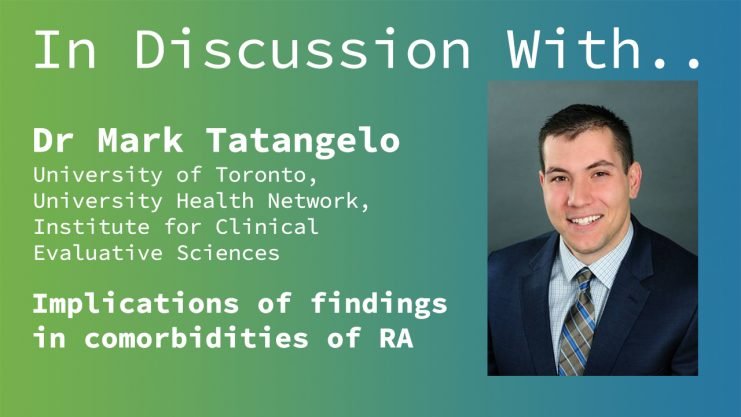Advertisment
Implications of findings in comorbidities of RA

Interview and article by Chrstine Clark
The findings of a recent Canadian study examining comorbidities before and after the diagnosis of rheumatoid arthritis (RA) could have important implications for practice, according to lead researcher Dr Mark Tatangelo
The results of the study suggest that RA patients show detectable patterns of care use and this information could be useful when a patient is diagnosed with RA.
Dr Tatangelo explains, “Often one of the first questions from a patient is ‘What does this mean for my life?’ and, ‘What, going forward can I expect?’, and the nice thing about these results is they really give physicians the data to say to patients, ‘Here are the different systemic risks of RA. You can expect a certain increase in heart conditions, lung conditions…and they can give the percentage risks to patients and they can confidently say that this diagnosis period is likely the worst for comorbidities that they are going to have. So they can not only talk about long-term disease trajectories but can also discuss disease-specific risk conferred by this type of diagnosis. [This is] not to scare patients but just to given them a realistic idea of what the disease is actually going to be like.”
The results of this study suggest that in future it might be possible for a clinician (or patient) to identify the early signs of RA or be on alert for symptoms. Similarly it might be possible to identify patients who have a high probability of RA given their past medical histories. “We could be using computer predictive tools to alert a patient or give a recommendation based on a patient’s risk profile to tell a patient that they are more at risk for certain types of comorbidities or negative events”, says Dr Tatangelo. However, he cautions that further developments will be needed before this becomes reality. “I would say we have to walk before we run. The first step was to define the disease but as time goes on and the technology gets better we should be able to move into more assisted decision-making for patients and clinicians with this disease”, he says.
The results suggest there is data to indicate that at the population level predictions could be made about a patient’s future risk of acquiring RA. “If those predictions were possible, medical ethics dictates that you should at least ask a patient if they would like to know about this increased likelihood of a disease”, says Dr Tatangelo. At present, the predictive engines to do this do not exist, he acknowledges, but in future it should be possible to build them and it would be useful to be able to tell people about their increased risks. “In patients who have a risk of developing a chronic condition, just to know to look for the symptoms could help with early treatment or with early disease recognition, improving outcomes for the long term”, he says.
Read and watch the full series on our website or on YouTube.





